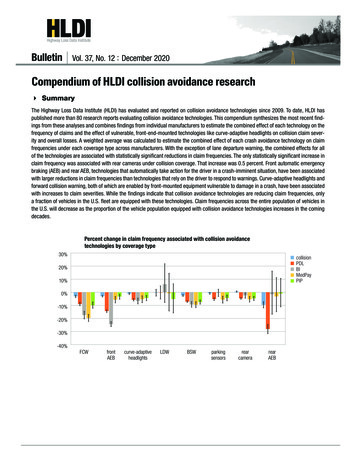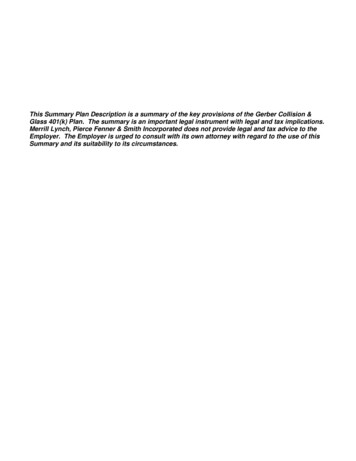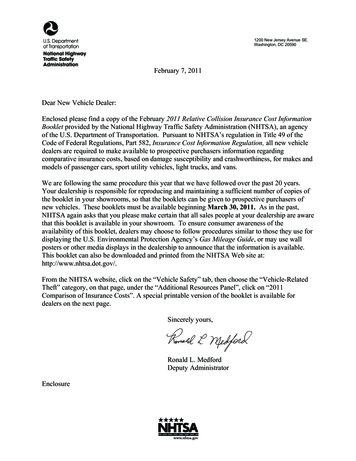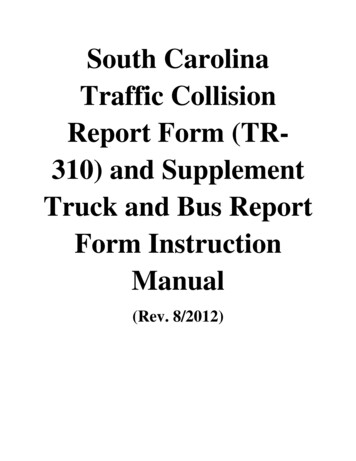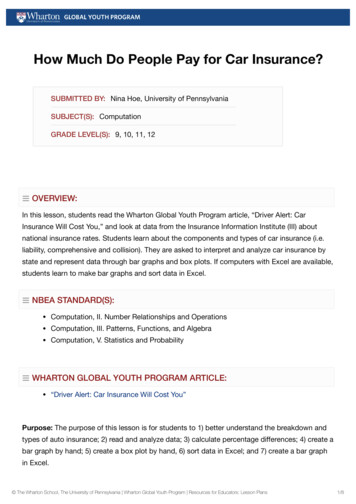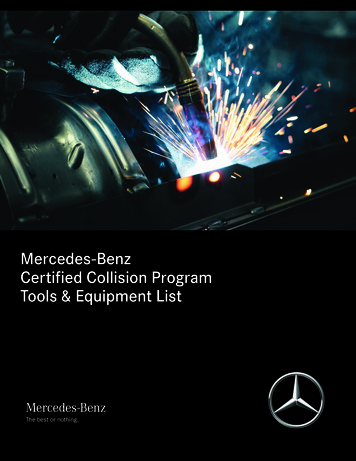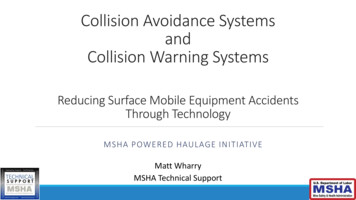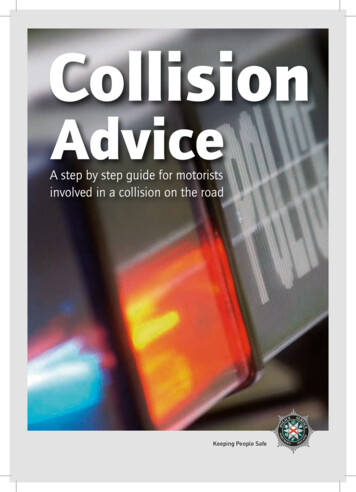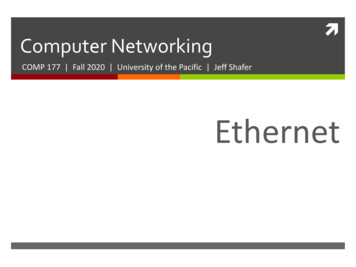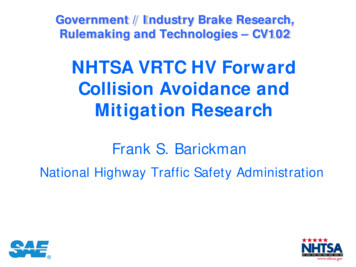
Transcription
Government / Industry Brake Research,Rulemaking and Technologies – CV102NHTSA VRTC HV ForwardCollision Avoidance andMitigation ResearchFrank S. BarickmanNational Highway Traffic Safety Administration
2
Overview Heavy Vehicle Rear-End Crash ProblemDefinitions of Rear-End Crash AvoidanceTechnologiesLV NCAP Forward Collision Warning TestHeavy Vehicle Rear End Collision AvoidanceResearch at VRTCConclusions3
Heavy Truck Crashes Rear-end Crashesaccounted for 19.9% of allpolice reported heavy truckcrashes based on GES2004.Heavy truck was thestriking vehicle in 60% ofthese rear end crashes.4
Rear-End Pre Crash ScenariosMost frequent rear-end pre-crash scenarios: 26%:Lead vehicle stopped 14.5%: Lead vehicle decelerating 13.3%: Lead vehicle moving at constant speedDevelopment of Crash Imminent Test Scenarios for Integrated Vehicle-Based Safety Systems DOT HS 810 7575
Technologies Preventing Rear-EndCrashesACC – Autonomous Cruise ControlICC – Intelligent Cruise ControlACB – Active Cruise with BrakingFCW – Forward Collision WarningCIB – Crash Imminent BrakingCMB – Collision Mitigation BrakingDBA – Dynamic Brake AssistABA – Automatic Brake Application6Comfort andConvenience withsome safety benefitsPassive – Driver musttake action.Active – Variouslevels of autonomousbraking
LV New Car Assessment Program MY 2011 New VehiclesNCAP Crash Avoidance Technologies 1. Electronic Stability Control2. Forward Collision Avoidance3. Lane Departure Warningwww.regulations.gov Docket No. NHTSA-2006-265557Confirmation testsfor each of thesetechnologies
LV FCW Test Maneuvers8
Key FCW NCAP Evaluation Criteria Successful Test Requirements 7 trials per condition are performedTTC requirements must be satisfied for 5 of the 7 trialsTTC requirements must no be violated 2 consecutive trialsTime To Collision (TTC) Stopped POV: 2.1 secDecelerating POV: 2.4 secSlower Moving POV: 2.0 sec9
HV Rear-End CA Research Objectives Quantify the state-of-the-industry for HV FCWand CIB from performance testing with a POV Time To Collision (TTC)Delta V @ impactDetermine if the LV FCW confirmation test canbe adapted for HV evaluationIdentify issues and challenges unique to HV10
Test Vehicles 2006 Freightliner Century Class 6X4 2006 Volvo VNL64T630 6x4 Retrofitted MW OnGuard SystemRetrofitted Bendix Wingman ACB System28 ft Great Dane Flatbed 121 style control trailer11
Test MatrixFreightlinerScenarioSV encounters a stoppedPOVSV encounters adecelerating POVSV encounters a slowermoving POVVolvoSpeed(MPH)Bobtail121 StyleLoadingBobtail121 XXXX45XXXX55XXXXDraft – Subject to change12
Balloon Car – POV for CIB13
Stopped POV: LV CIB Example14
HV Example15
HV Example#216
HV Example #317
Known Issues Current protocol designed for FCW not CIBStopped Lead Vehicles State-of-Industry not detecting stopped leadvehicles that were not previously trackedConfirm track tests and protocol notgenerating artificial data Mass estimationAccurate target responseRCS of target18
Conclusions Rear-end collision avoidance technology is expectedto improve automotive safety in both LV and HVFCW - Potential to reduce 21% of heavy vehicle rearend crashes VTTI: 2/2008 DOT HS 810 910Battelle: 2006 Evaluation of the Volvo IVI FOTCIB – Current research in support of understandingperformance and determining safety benefits19
Questions?frank.barickman@dot.gov20
CMB - Collision Mitigation Braking DBA - Dynamic Brake Assist ABA - Automatic Brake Application . Retrofitted MW OnGuard System 2006 Volvo VNL64T630 6x4 Retrofitted Bendix Wingman ACB System .
